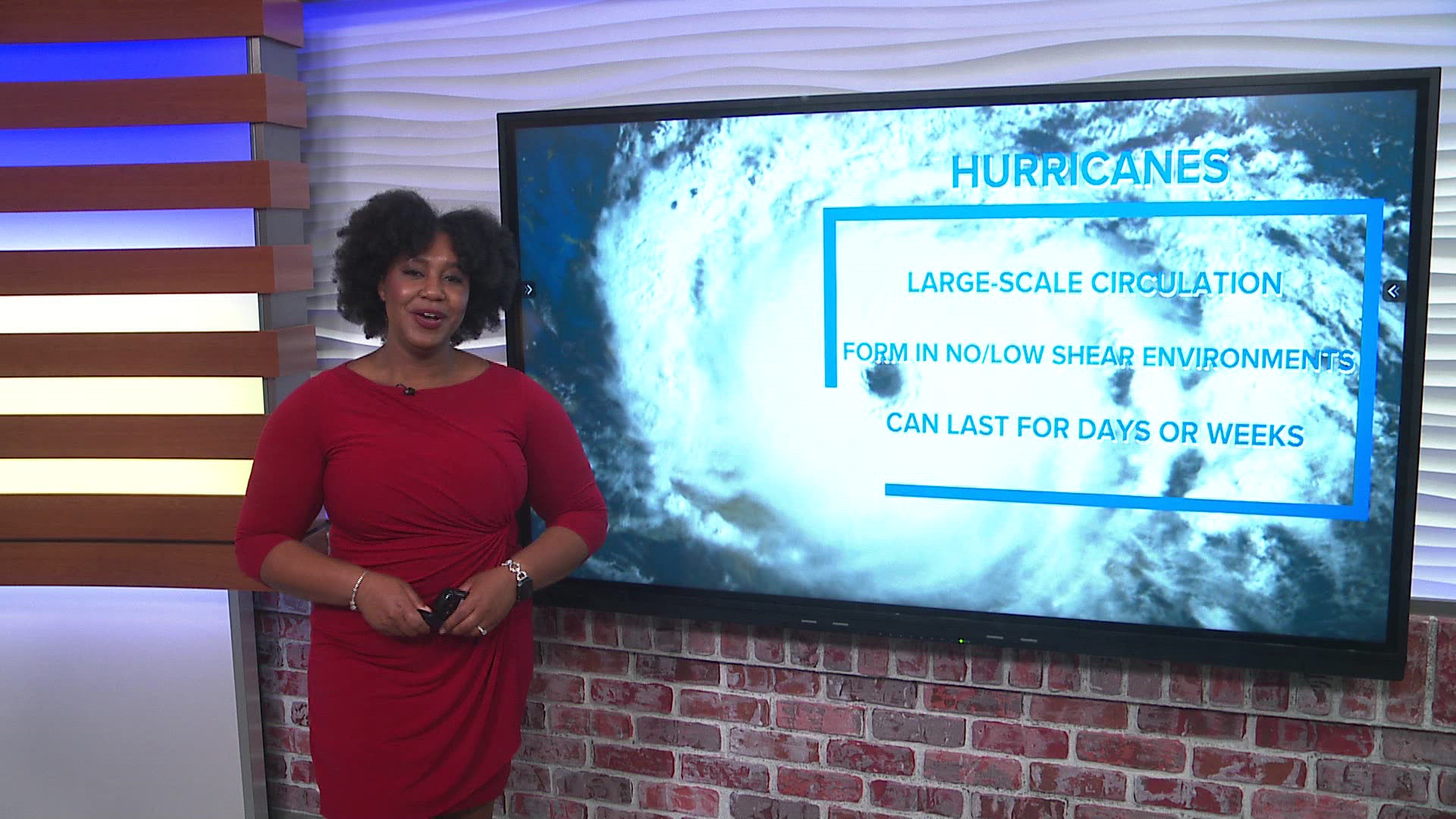NORFOLK, Va. — As most people know, tornadoes and hurricanes are not the same, but let's dive into the meteorology behind why they're different. The majority of the differences come from how the threats form.
Tornadoes are small-scale circulations that form over land. These twisters thrive in high wind shear environments.
Wind shear is the change in wind direction with height or the change in wind speed with height. A combination of the two is also possible during severe weather. This rotation gives tornadoes their spin. If this same type of circulation happened over a body of water, the funnel would be deemed a waterspout.
According to the National Weather Service, on average, tornadoes only last five to 10 minutes.
Tornadoes are rated on the Enhanced Fujita (EF) scale, with an EF0 being the weakest tornado and an EF5 being the most violent and rare tornado.
Now, let's compare this to hurricanes.
Hurricanes are large-scale circulations that form over the water. These storms prefer low to no wind shear. That's because wind shear in this instance would dismantle a hurricane. Tropical systems thrive under uniform winds.
Additionally, hurricanes typically last days or even weeks and can spawn tornadoes as they rotate.
Hurricanes are rated on the Saffir-Simpson scale, with a category 1 hurricane producing winds of at least 74 mph and a category 5 hurricane producing winds of 157 mph or higher. Any hurricane that is a category 3 storm or higher is considered a major hurricane.
As we dive deeper into hurricane season, you may have more questions about tropical systems, safety plans, or how to receive alerts. You can visit 13News Now's Hurricane Guide for more information.
RELATED:

